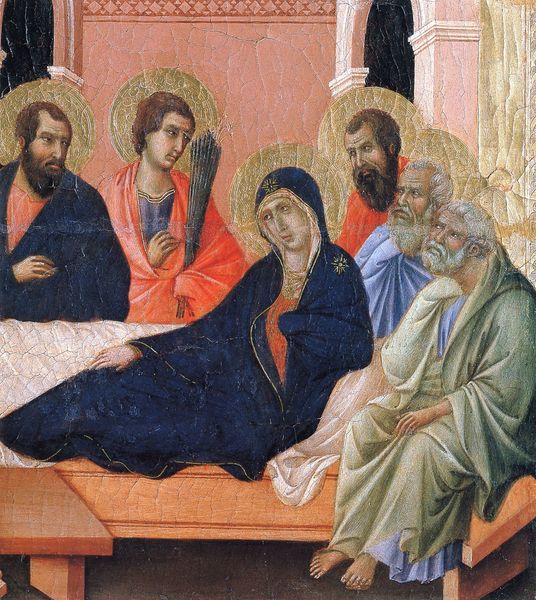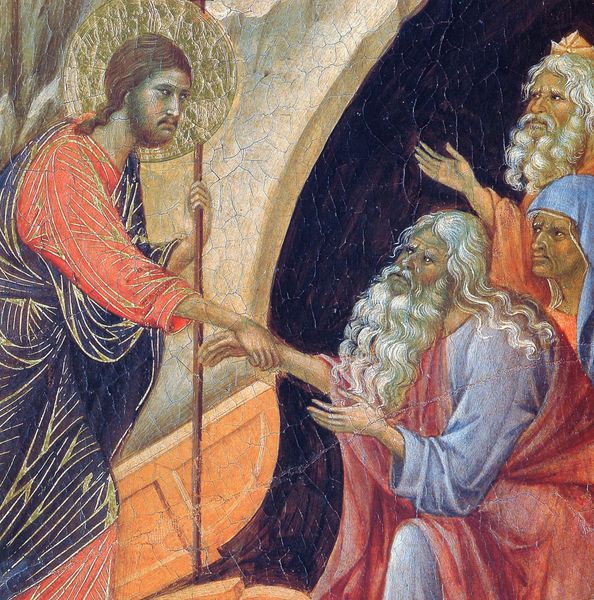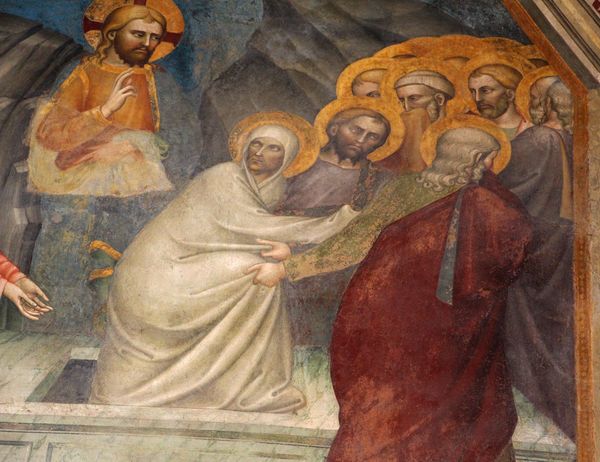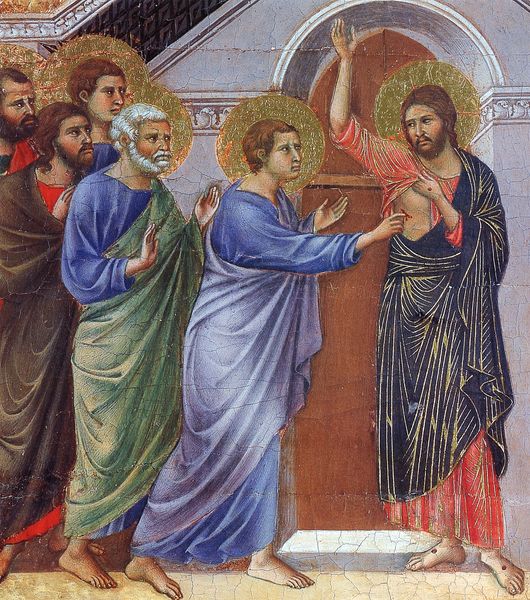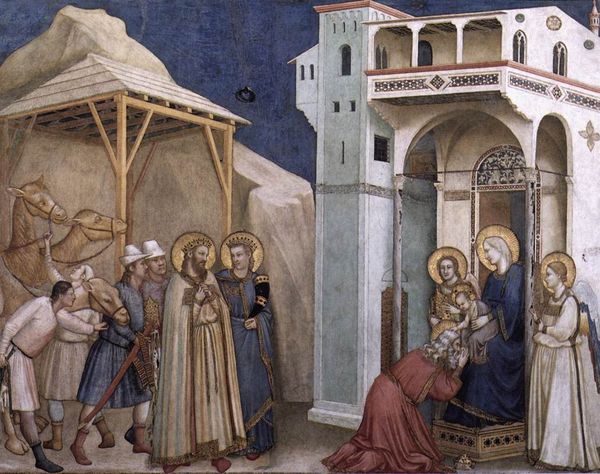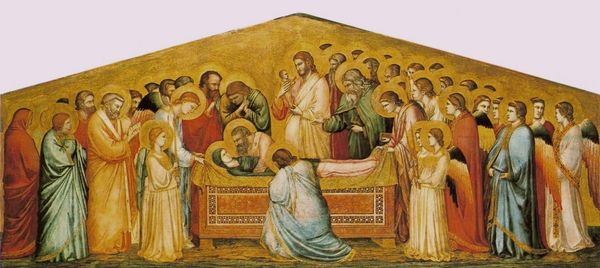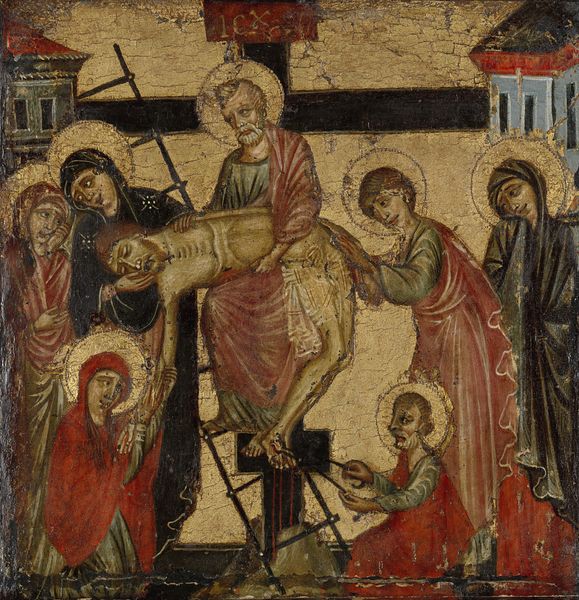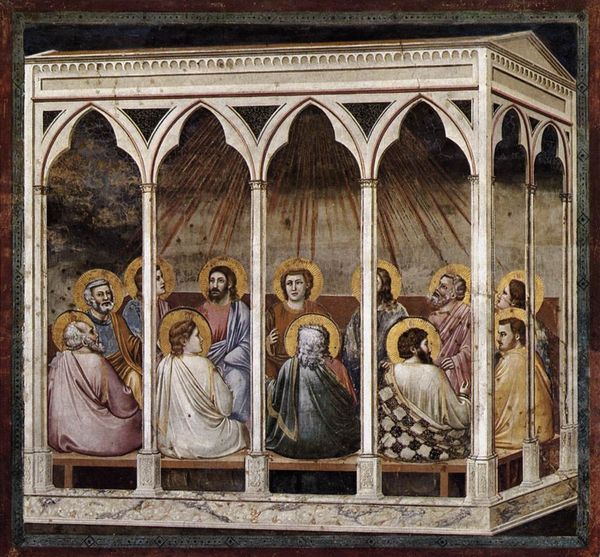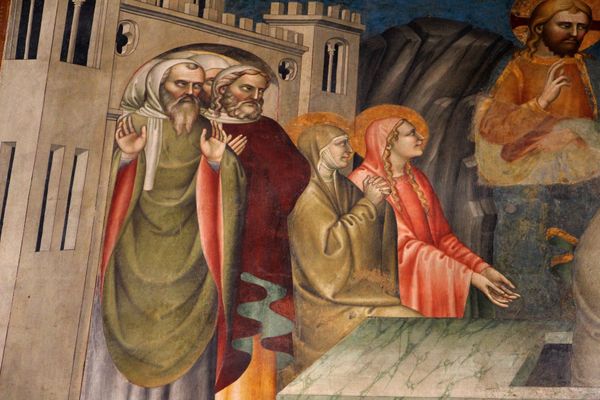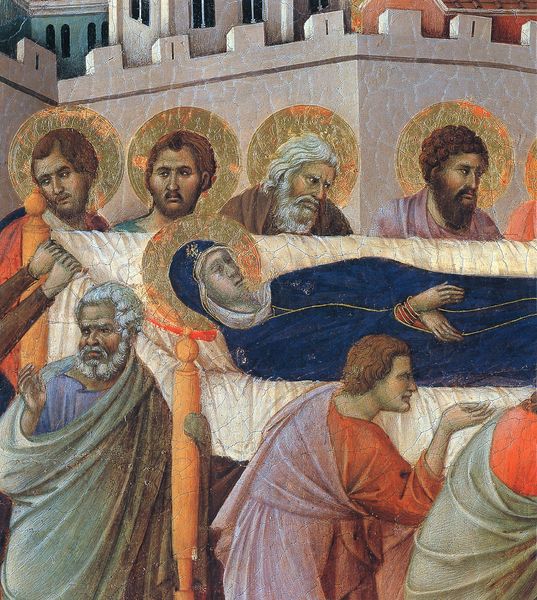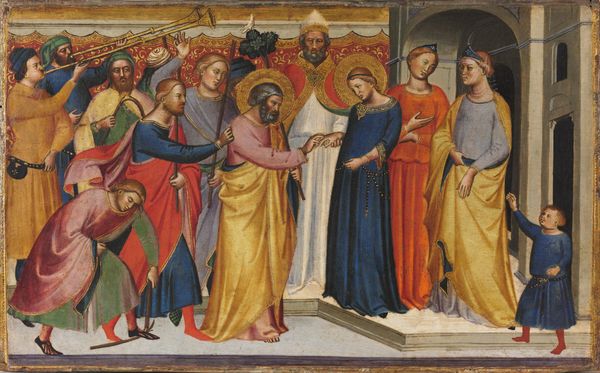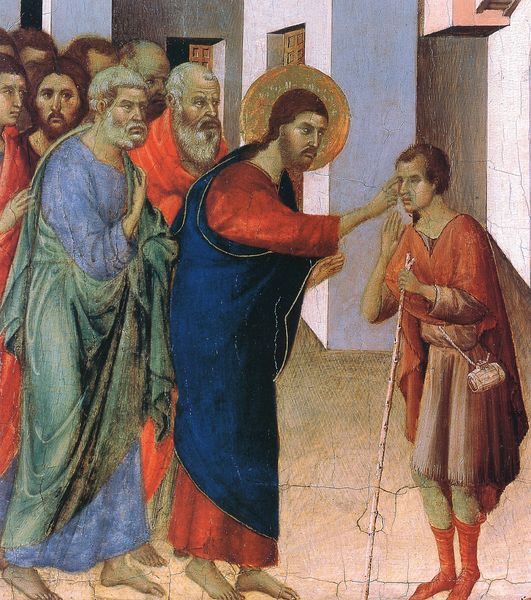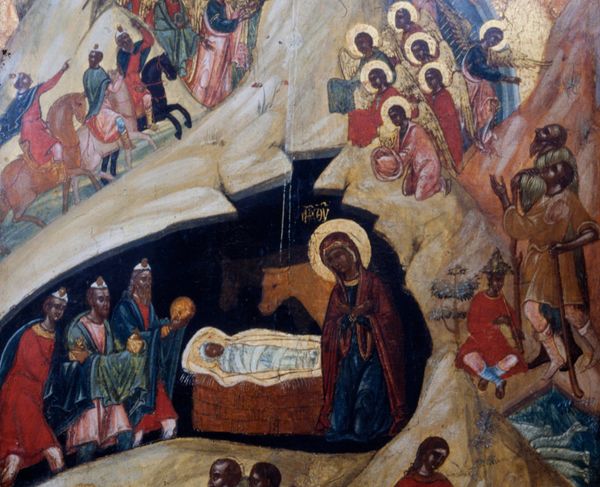
tempera, painting, fresco
#
medieval
#
tempera
#
painting
#
prophet
#
figuration
#
fresco
#
oil painting
#
underpainting
#
history-painting
#
italian-renaissance
Copyright: Public domain
Editor: So, this is Giovanni da Milano's "Cappella Rinuccini," a fresco made around 1370. The figures have this somber stillness to them, like a paused play. As an art historian, what catches your eye? Curator: What strikes me is how the frescoes were, and remain, deeply embedded in their original social and political context. They were not simply decorative but active participants in the spiritual and social life of the Rinuccini family and, more broadly, the Florentine elite. What do you think the location might mean for viewers across time? Editor: I imagine then it would feel less like ‘art’ and more like an immersive spiritual experience? Like you’re stepping into their world, their beliefs? Curator: Precisely! And the frescoes' accessibility - placed in a family chapel- meant art served a specific function of both devotional practice and also displaying wealth, and family prominence, as powerful forms of visual communication within that specific societal moment. How might its physical inaccessibility in museums, for example, then impact how viewers connect with that original intention today? Editor: That's fascinating! I never considered how location alone shapes the artwork’s meaning over time. So the intended devotional and social statement… is shifted to being perceived, and experienced as "Art" with a capital A! I'll have to rethink how I approach artworks moving forward. Curator: Exactly! And seeing art as socially produced enriches the whole experience. Consider how institutions today create meaning. That will shift your experience of artworks forever.
Comments
No comments
Be the first to comment and join the conversation on the ultimate creative platform.
